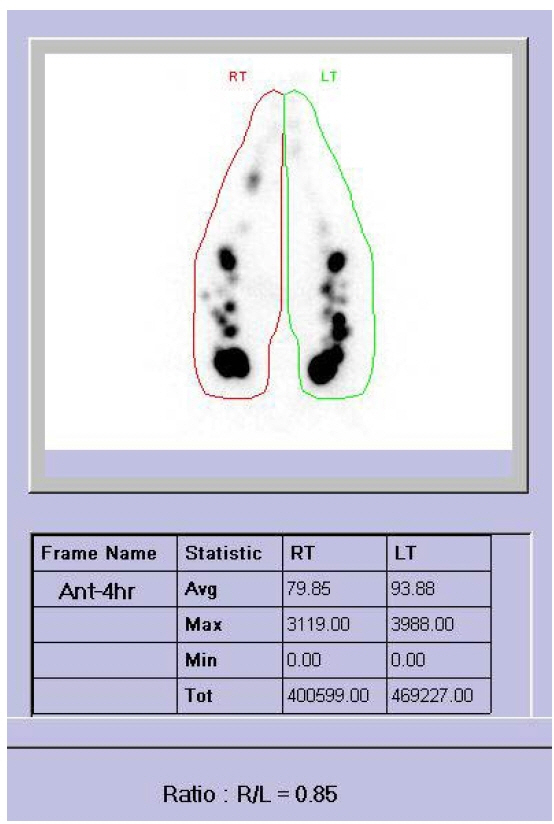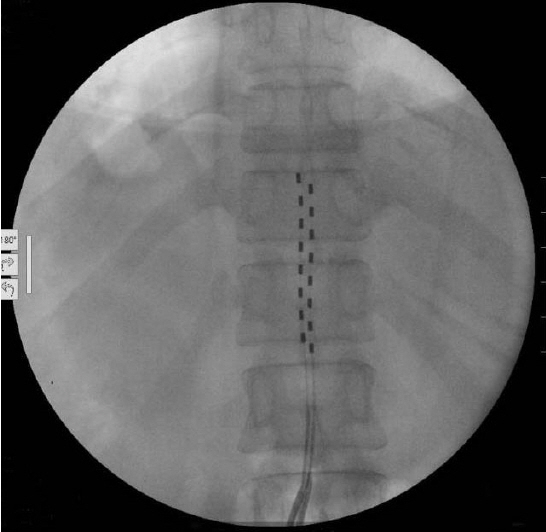Anesth Pain Med.
2023 Jan;18(1):70-74. 10.17085/apm.22239.
Treatment experience in a patient of complex regional pain syndrome combined with secondary lymphedema of lower extremity
- Affiliations
-
- 1Department of Anesthesiology and Pain Medicine, Keimyung University Dongsan Hospital, Daegu, Korea
- KMID: 2540337
- DOI: http://doi.org/10.17085/apm.22239
Abstract
- Background
Lymphedema is characterized by localized tissue swelling due to excessive interstitial space retention of lymphatic fluid. Lymphedema is easy to be misdiagnosed since itresembles other conditions of extremity swelling. We present a case of complex regionalpain syndrome (CRPS) type I with secondary lymphedema that was successfully managedwith spinal cord stimulation (SCS).Case: A 39-year-old female patient came to our pain clinic with complaints of lower extremity pain and edema. To find out reason of leg edema, computed tomography of extremity angiography and blood test were performed. However, all of evaluations were normal. Lastlyperformed lymphoscintigraphy showed secondary lymphedema. SCS was performed and itshowed dramatic reduction subsequent to implantation of SCS.Conclusions: We could successfully manage the intractable pain and edema in CRPS combined with lymphedema. If a patient presents different nature of edema, coexistence of other disease needs to be considered.
Keyword
Figure
Reference
-
1. Kessler A, Yoo M, Calisoff R. Complex regional pain syndrome: an updated comprehensive review. NeuroRehabilitation. 2020; 47:253–64.
Article2. Harden NR, Bruehl S, Perez RSGM, Birklein F, Marinus J, Maihofner C, et al. Validation of proposed diagnostic criteria (the "Budapest criteria") for complex regional pain syndrome. Pain. 2010; 150:268–74.
Article3. Grada AA, Phillips TJ. Lymphedema: pathophysiology and clinical manifestations. J Am Acad Dermatol. 2017; 77:1009–20.4. Marinus J, Moseley GL, Birklein F, Baron R, Maihöfner C, Kingery WS, et al. Clinical features and pathophysiology of complex regional pain syndrome. Lancet Neurol. 2011; 10:637–48.
Article5. Sudduth CL, Greene AK. Lymphedema and obesity. Cold Spring Harb Perspect Med. 2022; 12:a041176.
Article6. Pappalardo M, Cheng MH. Lymphoscintigraphy for the diagnosis of extremity lymphedema: current controversies regarding protocol, interpretation, and clinical application. J Surg Oncol. 2020; 121:37–47.
Article7. Thompson B, Gaitatzis K, Janse de Jonge X, Blackwell R, Koelmeyer LA. Manual lymphatic drainage treatment for lymphedema: a systematic review of the literature. J Cancer Surviv. 2021; 15:244–58.
Article8. Santambrogio L. The lymphatic fluid. Int Rev Cell Mol Biol. 2018; 337:111–33.
Article9. Naoum JJ, Arbid EJ. Spinal cord stimulation for chronic limb ischemia. Methodist Debakey Cardiovasc J. 2013; 9:99–102.
Article10. Vincenzo S, Kyventidis T. Epidural spinal cord stimulation in lower limb ischemia. Acta Neurochir Suppl. 2007; 97(Pt 1):253–8.
Article11. Klomp HM, Steyerberg EW, Habbema JD, van Urk H; ESES Study Group. What is the evidence on efficacy of spinal cord stimulation in (subgroups of) patients with critical limb ischemia? Ann Vasc Surg. 2009; 23:355–63.
Article
- Full Text Links
- Actions
-
Cited
- CITED
-
- Close
- Share
- Similar articles
-
- Lymphaticovenous Anastomosis in Lower Extremity Lymphedema: A Case Report
- Musculoskeletal Problems in Upper Extremity after Stroke
- Indirect Lymphangiography as a diagnostic technique of lymphedema
- Tremor in Complex Regional Pain Syndrome Type I Treated with Levodopa: A case report
- Secondary Lymphedema after Femoral Venous Catheterization




